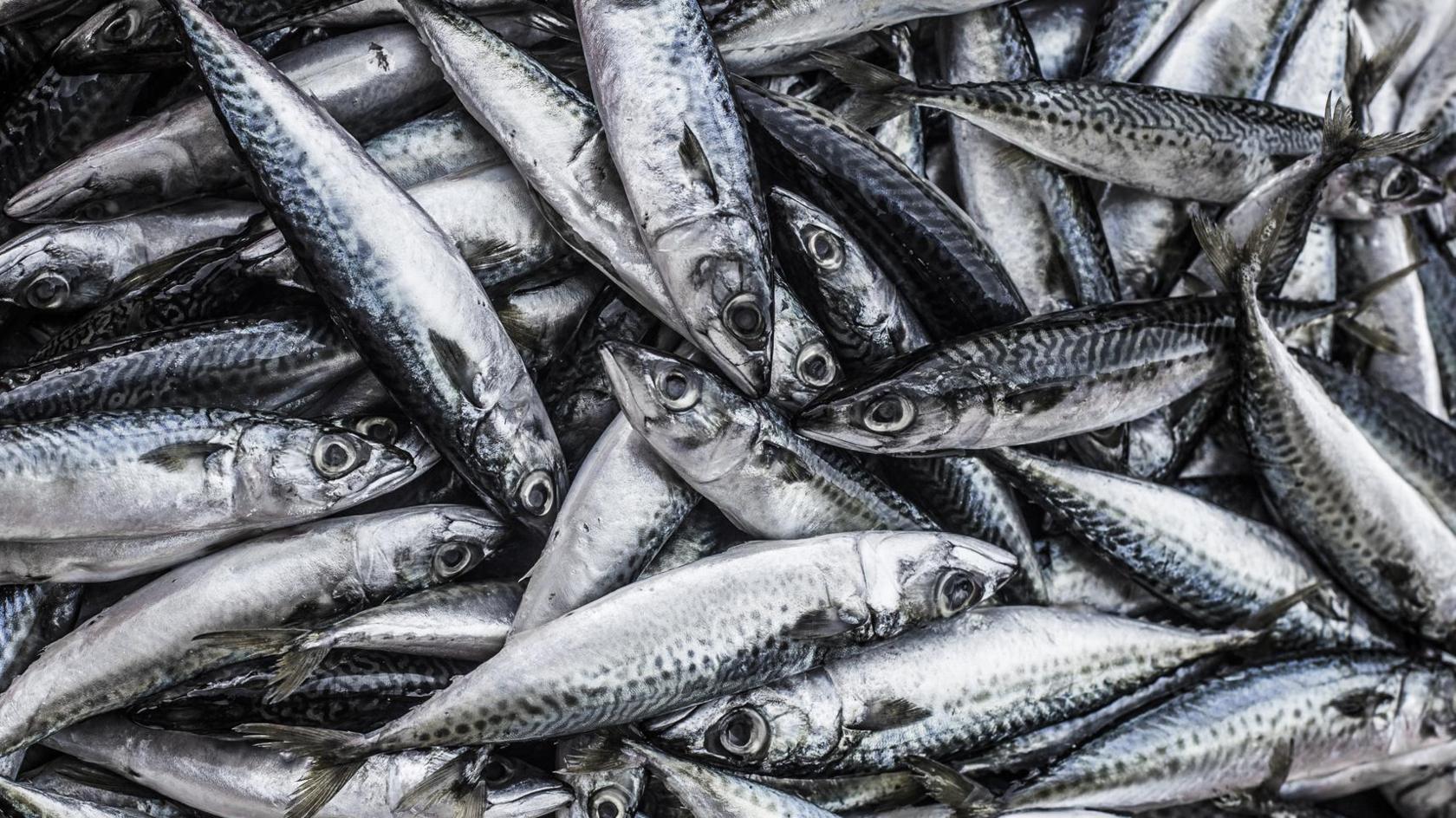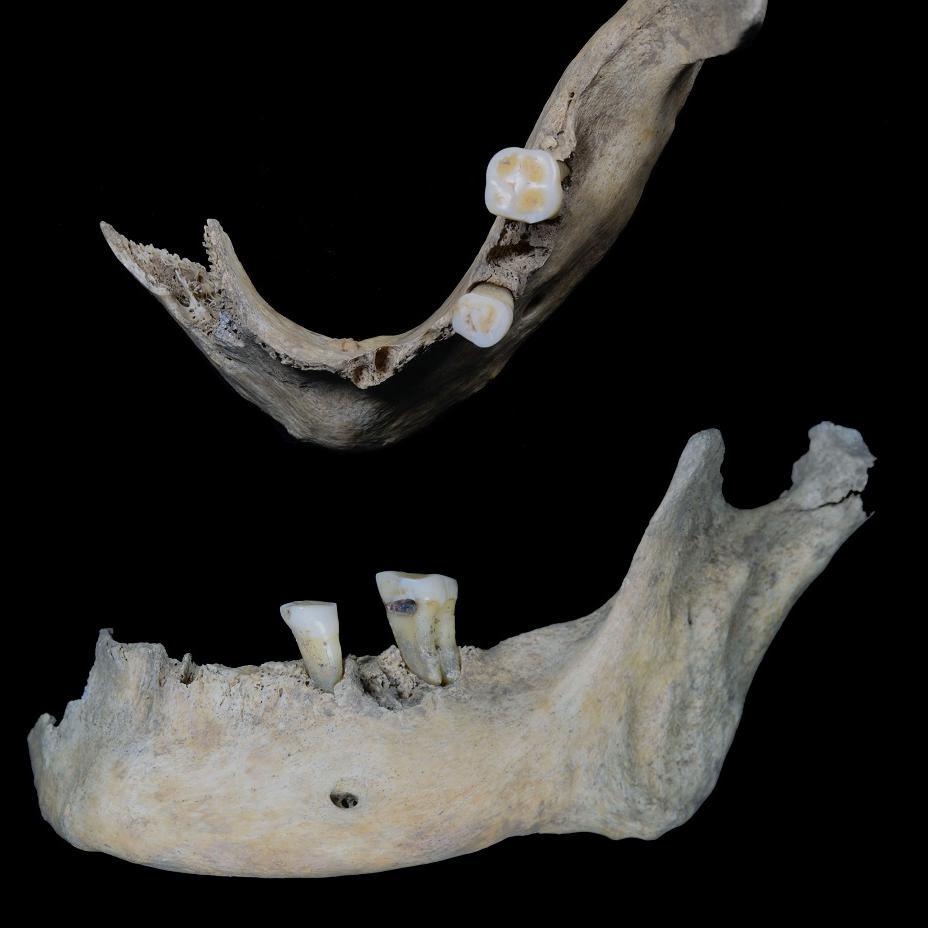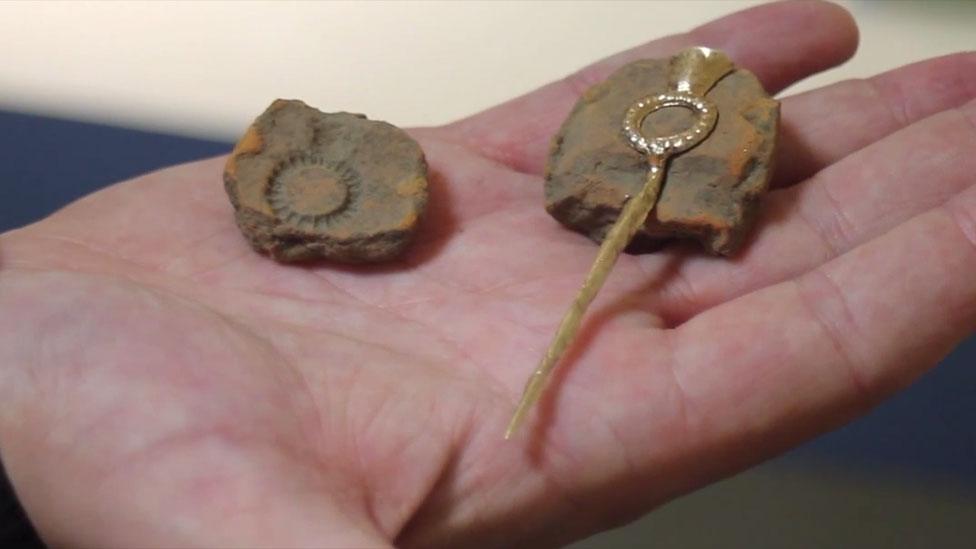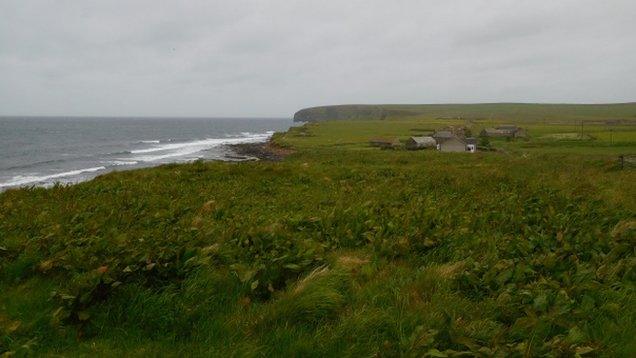Iron Age woman's diet of 'fish suppers'

At a glance
Archaeologists have discovered a woman who lived in Orkney in Iron Age times had a diet rich in seafood
A marine diet was unusual in Iron Age Britain
Experts analysed a tooth from a jawbone uncovered during excavations at The Cairns, South Ronaldsay
Archaeologists have suggested the woman may have had a special role or status
- Published
A woman who lived in Orkney 1,800 years ago had a diet that was unusually rich in seafood, say archaeologists.
Very little evidence has been found of fish being consumed in Iron Age Britain, despite the abundance of the marine life, according to the UHI Archaeology Institute.
Possible reasons for this may have included social restrictions or taboos around eating seafood.
Experts at the institute have been involved in analysing a tooth from a woman's jawbone that was uncovered during excavations at The Cairns in South Ronaldsay.
The bone appeared to have been carefully placed inside a container made from a whale vertebra, and studies of the tooth have revealed the woman had eaten "fish suppers" all through her life.
Archaeologists suggest she may have had a special role or status and have nicknamed her The Elder.

The jawbone was found inside a vessel made from a whale vertebra

A tooth from the woman's jawbone was analysed
The UHI Archaeology Institute has been working with the University of York and the British Geological Survey's National Environmental Isotope Facility in analysing the tooth.
The studies have involved looking at layers of dentine laid down over time as the tooth grew, and of dietary isotopes - evidence of foods - embedded in those layers.
Archaeologists said the tooth was sampled multiple times when the woman was estimated to have been three, seven, nine, 11, 13 and 15 years old.
The results showed seafood had been a fairly consistent part of her diet during her childhood.
Earlier analysis had already shown she was eating fish towards the end of her life.
Martin Carruthers, site director of The Cairns excavations and a lecturer in archaeology at the UHI Archaeology Institute, said: “It’s remarkable to be able to reach back and solve a problem like the question over her diet, which was previously unclear.
"Now we can see that the marine foodstuffs that she ate were after all a normal part of life for her, and this allows us to move on with further investigation of the mystery over the apparent lack of seafoods in Iron Age society at this time."
Related topics
- Published27 September 2016

- Published6 July 2016
